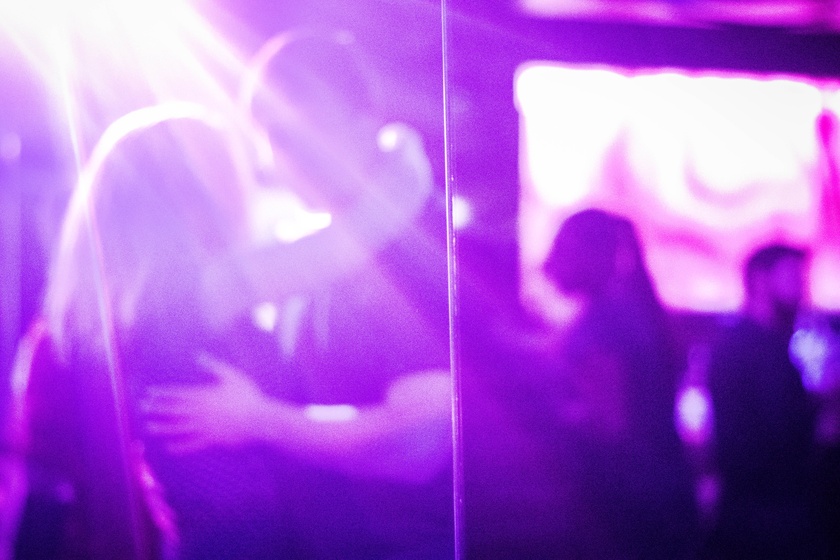Campus conversations about social spaces often surround a lineup of usual suspects, from dorm rooms to final clubs to Houses to Felipe’s rooftop and back. While these spaces may represent how most students at Harvard experience the party scene, some have turned to offbeat locations that are open a little later into the night.
While there is no universal definition of a “rave,” frequent attendees like Connor Cook ’17 say that a rave “feels more like a community organized thing. “It wouldn’t really be at a club,” Cook adds. “A lot of times it would be in some random warehouse or vacant building space… but community I think is a really big word. Even if you don’t know any of these people, everyone’s there to dance and have a good time.”
Peyten M. Sharp ’18 defines a rave as an event where “there’s a lot of EDM playing, people are dressed in like neon, or whatever they want to be dressed in. People dress for themselves, basically, so you can wear whatever you want,” Sharp says.
According to Harvard’s rave experts, the most important aspects of the events seem to be time and energy. Raves start late and they go on until the sun rises in the morning. Energy keeps rave-goers going—it takes stamina to dance for upwards of eight hours. “If you think about it on an energy scale or a metaphorical volume dial, a rave would definitely be in the max region with lots of gain... It’s definitely the energizer bunny-esque realm,” Lana A. D. Harris ’18 says. Sharp describes the energy level as “beyond hype,” while Cook describes the mindset as “I’m not done. I need to keep going.”
Students coming to Boston from areas where rave culture is more prevalent may be disappointed with the city’s offerings, though. With venues and clubs closing by 2 a.m., the city doesn’t prove to be conducive to super-late night activities. But students make do with what Boston does offer, and that seems to be a thriving music scene.
Electronic, House and Trance are the typical genres heard at raves, and while there aren’t any raves in Cambridge proper, venues around town frequently put on events featuring these types of artists. Cook regularly attends electronic shows in the area and emphasizes the culture of these events: “There is a community there.”
Sharp and some of his friends enjoy attend ing iExperia, which is at the House of Blues, and they do it once a semester…. It’s probably the closest thing to a rave in Boston,” he says. Cook, on the other hand, uses websites to keep track of rave-esque, one-time and late night events that take place in the area. This past weekend, he went to an event he found on a website called ResidentAdvisor.net, dedicated to advertising specialized, late night events. “The one I’m going to is organized by something called ‘Dusk ‘till Done,’” Cook says. “It’s at a secret location, so they don’t release the location until the night of,” he explains, a typical strategy for most of the events posted on websites.
Cook recalls another memorable rave he went to in London. A couple of Spaniards he was splitting a house rental with led him to a forested location 45 minutes outside of the city at around 1 a.m. What Cook describes next could only have happened in the funky, obscure world of raves.
“A glow stick trail leads you into the forest, and there was a clearing of full DJ setup, full lights, 100 to 200 people just in the middle of this forest,” he says. “I just danced till the next day.”


